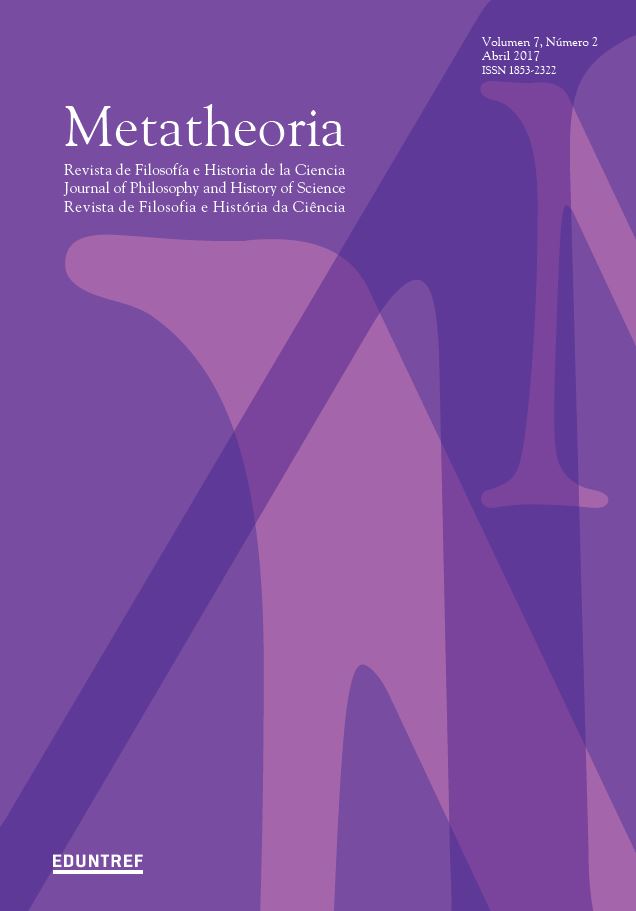Inconsistency within the Everett Interpretation of Quantum Mechanics
DOI:
https://doi.org/10.48160/18532330me7.153Keywords:
quantum mechanics, ontology, inconsistency, EverettAbstract
Perhaps the most exotic interpretation of quantum mechanics is the so-called Everett interpretation. It was first conceived as an overcoming proposal to Copenhagen formulation of QM, free of the problems of the latter and with a realistic approach. In this paper, we show the several semantic and ontological problems in the current formulations of this interpretation, and we discuss the critical problem of the conserved quantities and the assumptions on the space-time symmetries in the theory. We conclude that Everett interpretation and its many modern reformulations are inconsistent.
References
Albert, D.(ed.) (2013), The Wave Function: Essays on the Metaphysics of Quantum Mechanics, Oxford:Oxford University Press.
Adlam, E. (2015), “The Problem of Confirmation in the Everett Interpretation”, Studies in History and Philosophy of Modern Physics47: 21-32.
Bunge, M. (1967), Foundations of Physics, Berlín: Springer.
Bunge, M. (1972), SemánticaI: Sentido y referencia, Barcelona: Gedisa. Bunge, M. (2012), Emergencia y convergencia, Barcelona: Gedisa.
Dennett, D.C. (1991),“Real Patterns”, Journal of Philosophy87:27-51.
Deutsch, D. (1999), “Quantum Theory of Probability and Decisions”, Proceedings of the Royal Society of LondonA455: 3129–3137. Disponible enhttp://arxiv.org/abs/quant-ph/9906015.
Everett, H. (1957), “The Relative State formulation of Quantum Mechanics”, Reviews of Modern Physics29: 454-462.
Hartle, J.B., Laflamme, R. y D. Marolf (1995), “Conservation Laws in Quantum Mechanics of Closed Systems”, PhysicsReview51(12): 7007-7016.
Hsu, S. (2011), “On the Origin of Probability in Quantum Mechanics”, recuperado de arXiv:1110.0549[quant-ph].
Kent, A. (1990), “Against the Many Worlds”, International Journal of Modern PhysicsA5: 1745-1762.
Landsman, N.P. (2007), “Between Classical and Quantum”, en Butterfield,J. yJ. Earman (eds.), Philosophy of PhysicsPart A, Amsterdam: North-Holland, pp. 417-553.
Perez-Bergliaffa, S.E., Romero, G.E. y H. Vucetich (1993), “Axiomatic Foundations of Nonrelativistic Quantum Mechanics: A Realistic Approach”, International Journal of Modern Physics32(9): 1507-1522.
Vaidman, L. (2015), “Many-Worlds Interpretation of Quantum Mechanics”, The Stanford Encyclopedia of Philosophy (Edición de otoño 2014), en<http://plato.stanford.edu/archives/spr2015/entries/qm-manyworlds/>.
Wallace, D. (2012), The Emergent Multiverse, Oxford: Oxford University Press.
Wallace, D. (2010), “How to Prove the Born Rule”, en Saunders,S., Barrett,J., Kent, A. y D. Wallace (eds.), Many Worlds? Everett, Quantum Theory and Reality, Oxford: Oxford University Press, pp. 227-263.
Wilczek, F. (2013), “Remarks on Energy Conservation”, recuperado de http:// frankwilczek.com/2013/multiverseEnergy01.pdf
Zurek, W.H. (ed.) (1990),Complexity, Entropy and the Physics of Information, Redwood:Addison-Wesley.
Downloads
Published
How to Cite
Issue
Section
License
Copyright (c) 2017 Metatheoria – Journal of Philosophy and History of ScienceThe documents published here are governed by the licensing criteria
Creative Commons Argentina.Atribución - No Comercial - Sin Obra Derivada 2.5 https://creativecommons.org/licenses/by-nc-nd/2.5/ar/





